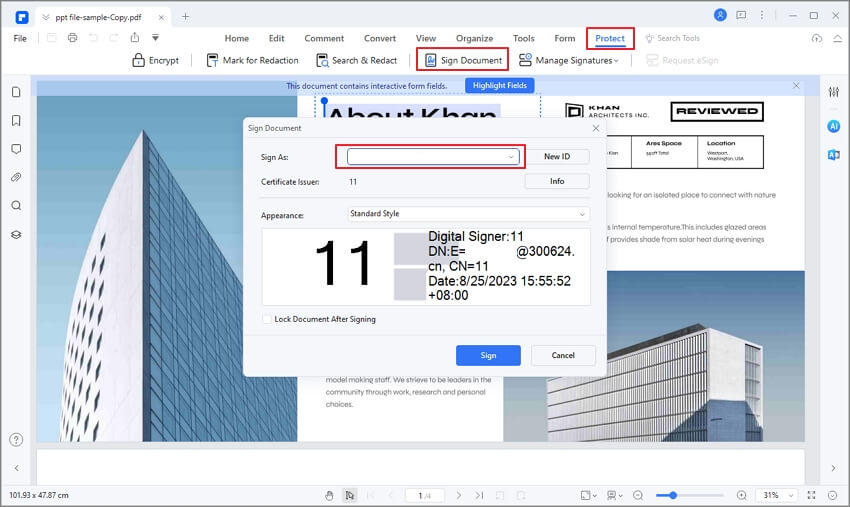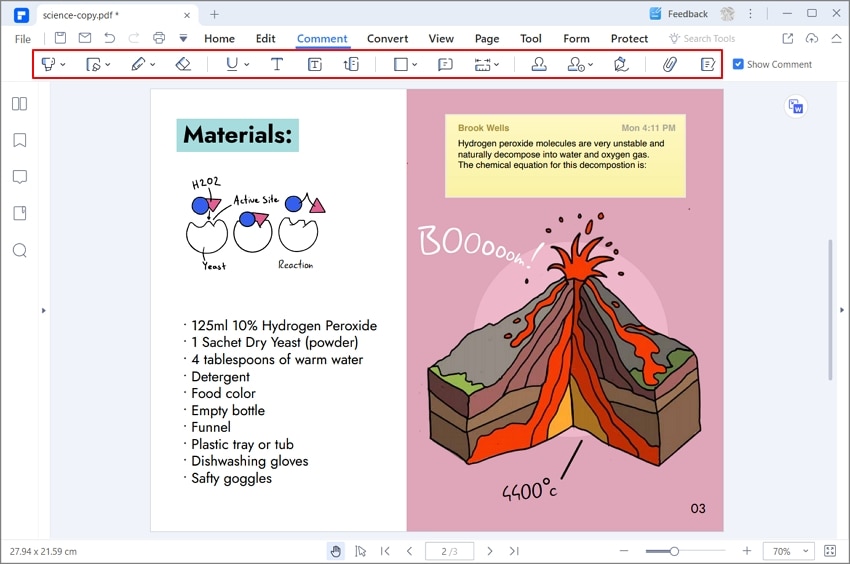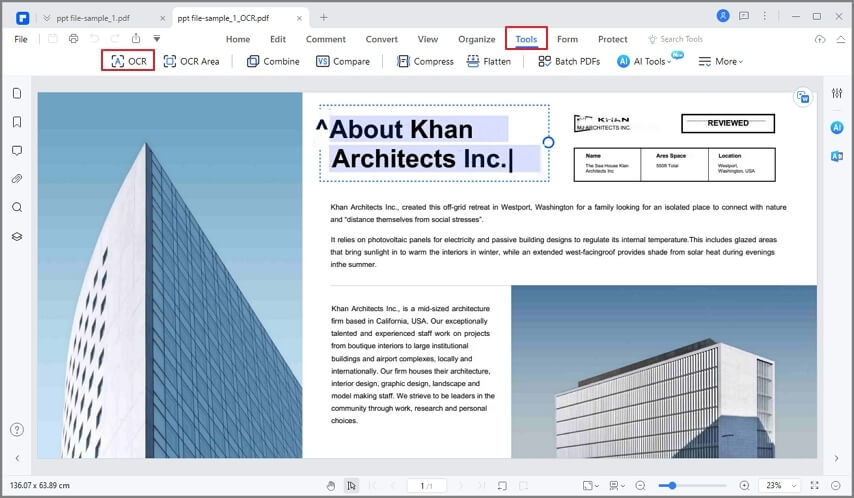How Does PDF Facilitate the Digital Transformation of the Architectural Design Industry
2024-05-22 13:36:15 • Filed to: PDF Edit • Proven solutions
PDF files have long been used in the field of architectural design. Although native formats typically come from their respective applications, such as AutoCAD, these formats are not ideal when it comes to disseminating design files. PDF came in as the perfect format for this due to many reasons, and thats what were going to explore today. This article looks at how PDF is enabling digital transformation in the architectural design industry in the age of the new normal.

Part 1. Digital Transformation of Architectural Design Industry
The pandemic has caused upheaval within most industries, forcing the entities comprising these industries to focus on digitizing their workflows and making them more remote-work-friendly. This has led to companies altering their internal and external processes to be better aligned with online collaboration and the ability to access information regardless of physical location. In turn, we have witnessed tremendous growth in areas like e-commerce, cloud computing, SaaS, and several other domains. One such domain is architecture. The architectural design industry has pivoted to become more digital than ever before, increasingly employing elements such as computer-aided design, building information modeling, and the Internet of Things.
Among other components of digital transformation in the architectural design industry are technological innovation, productivity enhancements, collaboration, culture changes, future opportunities. Lets look at each one to see how it impacts architectural design and prepares it to handle the needs of future generations.
Technology
Tech has been the most vocal enabler of the architectural design industry, but its more than merely adopting new technologies to embrace the future. Rather, the basic paradigm shift that has pervaded the culture of architectural design has been the driver of change, with technology ably supporting and facilitating it. In other words, the change in the way companies are working is directly influencing the technologies they adopt instead of the other way around.
Productivity
Productivity has quickly risen to the top as a priority item within the industry, and two areas have been identified as driving forces of enhanced productivity: skills and tools. While new skills require more effort in terms of training, certification, and experience, the use of new tools has accelerated productivity gains across the board. Technologies such as virtual, augmented, and mixed reality have carved new paths in the architectural landscape, while those like machine learning and big data have made information more readily accessible and comprehensible.
Collaboration
On the collaboration front, cloud computing has been a major game-changer for the architectural design industry, allowing geographically dispersed teams to work as a single unit. Such tools enable close coordination between design and construction, thereby enabling productivity gains and a greater strategic focus on the end client.
Culture
Digital transformation is not merely about adopting new technologies and learning new skills. It requires a seismic shift in the way architectural professionals look at their domains and their workflows. A key component here is empowerment. In other words, a support structure needs to be built underneath that can support and encourage change from the bottom up rather than being forced from the top down. In a study conducted by Microsoft and the Royal Institute of British Architects (RIBA), it was found that less than 50% of all architectural practices agreed that their leadership teams were digitally literate. Only a third of them said their leaders had a clear digital transformation strategy.
The Future
The future remains the single biggest driver of digital transformation in the architectural design industry. Enabled by technologies such as augmented reality, the Internet of Things, machine learning, cloud computing, and even social media and mobile devices, the future holds much promise for the industry as a whole. Although the current challenges - such as the lack of a unified digital strategy and shortage of digital skills - are slowing down digital transformation, these hurdles will soon become things of the past. The rapidly changing culture among architectural design professionals is a key engine that will facilitate this removal of hurdles, and the effects of it can be seen by how rapidly architectural design and construction companies are adopting new technologies in order to gain an edge in an increasingly competitive landscape.
Part 2. How Does PDF Facilitate the Digital Transformation of the Architectural Design Industry?
PDF forms an ideal bridge between design technologies and platforms, and the people they serve. Traditional architectural models need to be communicated to key stakeholders who may not have access to the same tools that a professional might have. As such, it is an important lynchpin in the evolution of the architectural design industry. Lets take a quick look at how PDF has positively impacted the design and construction segments and taken them to a new level of efficiency, collaboration, and productivity.
1. Digital delivery
PDF workflows are far more efficient than Illustrator or Photoshop workflows. This also applies to other design workflows involving design-based file formats such as DWG, DXF, PLN, RFA, and DGN. Exchanging information in these formats greatly limits accessibility due to the fact that they require special applications or conversion tools in order to view them. On the other hand, PDF workflows enable all stakeholders to have a consistent view of each project and design regardless of whether or not they have access to such specialized tools. In addition, PDFs can be viewed on any device using a modern browser, precluding the need for special software.
2. Information Compliance
PDF is built on open standards, and these standards are used globally to record and archive data. For instance, PDF/X defines standards for the professional printing of documents, PDF/A is used to define the parameters of archived files, and PDF/E is typically used for engineering documents. Similarly, there are several other standards for different purposes. This allows documents to adhere to compliance needs across multiple industries, including architectural design.
3. Document encryption and confidentiality
In a world of remote work, document security is paramount. PDF achieves this by implementing password-based encryption and file-action restrictions for copying, printing, and editing. Such encryption protocols can be applied using the Batch Process feature or applied to one file at a time, making it a highly flexible platform for PDF workflow management.
In addition, advanced tools such as Wondershare PDFelement - PDF Editor offer redaction tools to preserve the confidentiality of specific content within a widely distributed document.
4. Enhance creative work
PDFs allow users to include any type of digital content, whether its text, visual, or mathematical. As such, architects have the freedom to include any type of information that will enhance the creativity of the work as well as preserve these elements faithfully when converting to PDF. PDFelements batch conversion tool carefully maintains the integrity of any converted file, while the powerful conversion engine works fast to convert large files to PDF in minutes.

5. Improve the efficiency of information dissemination
PDF is also ideal for sharing information, whether its designs, specifications, or other types of content. The flexibility of PDF also means the ability to add content in layers so they can be controlled separately while viewing and printing. In addition, since PDF layouts are consistent across any device, users will not have to worry about layout changes, font differences, etc.
Part 3. Choose PDFelement for the Architectural Design Industry
Why PDFelement for the architectural design industry? Weve already seen some of its capabilities, such as file conversion, PDF security, batch processes, etc. The real draw is the fact that these are just some of its robust features, which include forms management, PDF creation and editing, e-signing, file size optimization, file and page management, optical character recognition (OCR), and more. Relevant to the architectural design industry and other fields of design are two features that need special mention here.
Electronic Signatures
Whether its architectural design, engineering design, or creative graphic design, one crucial element is the validation of design documents. PDFelement offers the ability to add electronic or handwritten signatures to your PDF files to validate the authenticity of the author and the contents of the file. These signatures are legally valid and will protect you from claims to and disputes regarding your designs.

To apply an electronic signature in PDFelement, follow the steps shown here:
- Open the PDF file by dragging it to the PDFelement interface and dropping it there.
- Click the Markup tool in the toolbar and then bring your mouse to the Electronic Signature icon shown in the new toolbar view.
- Click on Create Signature option, after which you will be guided through the steps of signature creation. You can also create a Digital Signature by going to Form and choosing the Digital Signature icon.
- Once created, you can click on the document where you want your signature to appear. Reposition and resize the signature after clicking outside the box to place it.
Information Transmission and Management
Improve the proofreading process
PDFs can be proofread and annotated with the extensive annotation tools available to hand in PDFelement. This includes highlighting content, adding shapes, inputting text comments, and so on.

Accelerate the sharing of creatives
PDF designs can be shared from within PDFelement via any connected application or service. This allows for easy sharing between team members or with clients.

Standardized searchable PDF files enable quick browsing and dissemination
Searchable PDFs can be created from image-based sources either by scanning to PDF or using Wondershare PDFelement - PDF Editor OCR plugin. This allows information to be found easily and shared with others in a searchable format.

With so many advantages, its logical to try PDFelement as an enabling tool in the digital transformation journey of your architectural design business. The most attractive aspect is the pricing, which comes in lower than many other premium PDF tools such as Adobe Acrobat DC. It is also less cluttered and more intuitive than Adobes PDF editor, and theres no steep learning curve involved for first-time users.
Free Download or Buy PDFelement right now!
Free Download or Buy PDFelement right now!
Buy PDFelement right now!
Buy PDFelement right now!
Speak Your Mind
Related Articles
- Applications and Advantages of PDF in Mobile Internet
- How to Use PDF Software in the Documents of Quality Management Systems
- The Application of PDF Technology in File Management
- How to Use PDF to Realize Personal knowledge Management for Teacher
- Application of PDF in the Library



Audrey Goodwin
chief Editor